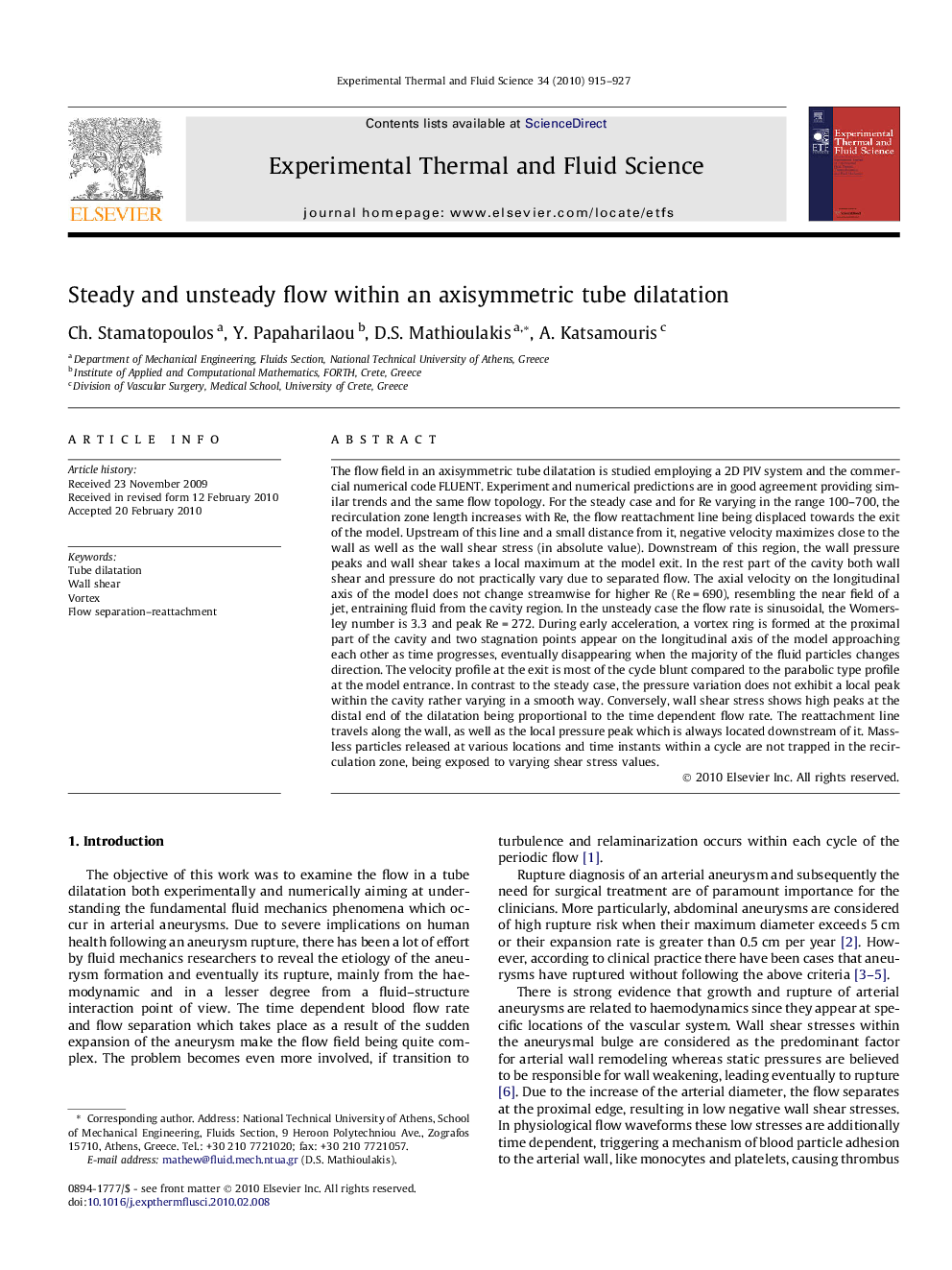| کد مقاله | کد نشریه | سال انتشار | مقاله انگلیسی | نسخه تمام متن |
|---|---|---|---|---|
| 652151 | 885005 | 2010 | 13 صفحه PDF | دانلود رایگان |

The flow field in an axisymmetric tube dilatation is studied employing a 2D PIV system and the commercial numerical code FLUENT. Experiment and numerical predictions are in good agreement providing similar trends and the same flow topology. For the steady case and for Re varying in the range 100–700, the recirculation zone length increases with Re, the flow reattachment line being displaced towards the exit of the model. Upstream of this line and a small distance from it, negative velocity maximizes close to the wall as well as the wall shear stress (in absolute value). Downstream of this region, the wall pressure peaks and wall shear takes a local maximum at the model exit. In the rest part of the cavity both wall shear and pressure do not practically vary due to separated flow. The axial velocity on the longitudinal axis of the model does not change streamwise for higher Re (Re = 690), resembling the near field of a jet, entraining fluid from the cavity region. In the unsteady case the flow rate is sinusoidal, the Womersley number is 3.3 and peak Re = 272. During early acceleration, a vortex ring is formed at the proximal part of the cavity and two stagnation points appear on the longitudinal axis of the model approaching each other as time progresses, eventually disappearing when the majority of the fluid particles changes direction. The velocity profile at the exit is most of the cycle blunt compared to the parabolic type profile at the model entrance. In contrast to the steady case, the pressure variation does not exhibit a local peak within the cavity rather varying in a smooth way. Conversely, wall shear stress shows high peaks at the distal end of the dilatation being proportional to the time dependent flow rate. The reattachment line travels along the wall, as well as the local pressure peak which is always located downstream of it. Massless particles released at various locations and time instants within a cycle are not trapped in the recirculation zone, being exposed to varying shear stress values.
Journal: Experimental Thermal and Fluid Science - Volume 34, Issue 7, October 2010, Pages 915–927